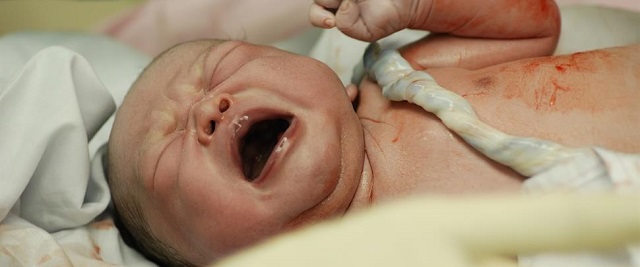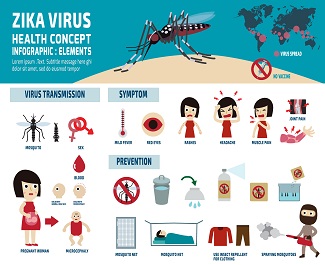Pregnancy labour signs
You are all excited that your baby is arriving soon. Knowing what to expect when the time comes will help you feel more confident and less anxious. Do you know what are the signs of your baby’s arrival? For a start, look out for regular painful contractions, a “show” or leaking of water from your “water bag”. When any of these happens, you should call or go to the hospital.
Contractions
Contractions come in waves in the form of a muscular pulling sensation. Sometimes they are described like period cramps or the sensation of needing to go to the toilet. They get stronger, peak, then fade before the next wave.
At the start, you may experience low backache and on-off contractions. The duration of labour vary from women to women and is generally longer for first-time mothers.
Wait a while if you are not sure if it is time to go to the hospital. If the pain is persistent and gets progressively more painful, then it is time to go. When the contractions intensify to once every 5 -10 minutes and accompanied by the urge to “bear down”, your baby is ready to come.
The “show”
The cervix is protected by a mucus plug that prevents infection. When you are in labour, the cervix will soften and dilate, causing the plug to dislodge.
This bloody mucus or “show” will stain your underwear or pad. If the blood loss is as heavy as your period, go straight to the hospital – it may be a sign of complication.
When the water bag breaks
This could be a sudden gush of water or a steady trickle, and it can happen before labour (when there are no contractions). If you suspect your water bag has burst, go to the hospital, as there is a risk of infection for the baby and you.
At any time if you notice that the baby is moving less than usual, go to your doctor or hospital immediately.
What will happen when I am in labour?
In the hospital, the doctor will hook you up to a machine to track your baby’s heartbeat, and the duration and frequency of your contractions.
The cervix or neck of your womb that has been closed for about nine months needs to open to allow passage of the baby.
There are three stages of labour
The First Stage
This occurs when the closed cervix opens up (dilates) to 10cm. This can be divided into two phases — the latent and active phase. In the latent phase of labour, the cervix which is closed, dilates to about 3cm. Normally a tubular structure, the cervix also thins out and becomes soft and stretchable. The latent phase can be many hours. Usually contractions are not so painful at this stage. As the contractions become stronger and more regular, you go to the active stage of labour. It is at the active phase that you need to be in the labour ward so that you and your baby can be monitored. Generally cervical dilation is expected to progress at about 1cm per hour during labour. Your doctor will monitor your progress and may intervene if it is deemed to be too slow.
The Second Stage
This occurs when the cervix is fully dilated to about 10cm until the delivery of the baby. Contractions are now more intense and there is an urge to push. There may be a heavier “show”. The baby’s head will push on the rectum and you may also feel like passing motion. This is when your doctor or nurse will ask you to “push”! This stage may last up to 1 and 1.5 hours for a new mother, or just a few minutes for experienced mums.
The contractions of the uterus help to push the baby through the birth canal, while the muscles in your diaphragm (as you hold your breath momentarily) and the abdominal wall also help to expel the baby when you are pushing. Once the baby’s head touches the pelvic floor, it will rotate and prepare to go through the pelvis.
The skin of the perineum (the area between your vagina and anus) usually stretches well, but may tear. The doctor may perform an episiotomy, which is a cut made on your perineum, to prevent it from tearing at all directions as the baby makes his way out. Once the baby’s head is out, his shoulders will adjust accordingly and the rest of the body will slide out.
Assisted delivery
You may need assisted delivery if:
- The second stage of labour is prolonged and you have been pushing for more than an hour.
- You are too tired and can no longer push effectively.
- Your baby shows signs of distress and delivery need to be expedited.
Assisted delivery methods
The methods used will depend on the circumstances and the preference of your doctor. You may need:
- Forceps (like a large pair of salad servers), which is inserted into your vagina to cup the baby’s head, to help the baby’s head ease its way through. The forceps may leave some marks on the baby’s face but they’ll fade gradually.
- Ventouse or vacuum extraction, which uses a suction cup on the baby’s head to hold on to the baby and may help the baby rotate and manoeuvre down the birth canal as you push.
The Third Stage
This is defined as the stage after the birth of the baby to the delivery of the placenta. A few minutes after birth, the placenta will separate from the uterine wall when the uterus contracts after the baby has been delivered. You will be given an injection at the thigh to prevent excessive bleeding. The doctor will check that the placenta is complete and stitch up the episiotomy or any tears you may have. Most mothers are so engrossed with cuddling their new baby that they may not even notice this stage.
Different hospitals may have slightly different practices but at some time your baby will be weighed, measured, given a health check and an identity tag as well as intramuscular vitamin K injection and Hepatitis B vaccination if you are agreeable. Resume skin-to-skin contact with your baby as soon as you can.
Types of Pain Relief during Labour
Listening to music and taking deep breaths will help you relax and handle the pain better. Before you decide on the pain relief method, discuss the options with your doctor.
1. Entonox (known as laughing gas)
How it works: You breathe in a mixture of oxygen and nitrous oxide through a mask intermittently throughout labour. This is the commonest form of pain relief used.
Side effects: You may experience nausea and drowsiness.
2. Transcutaneous Electrical Nerve Stimulation (TENS)
How it works: Electrode pads – connected to a small battery-operated stimulator – are taped onto your back. A current is passed across the pads, stimulating the production of endorphins, your natural pain-relieving hormones. Easy to use but takes 30 minutes to take effect. It is not effective when contractions are longer and more intense during the second stage of labour.
Side effects: Generally considered safe but it is best to check with your doctor.
3. Pethidine
How it works: This is a drug similar to morphine and heroine, and it is usually injected into the thigh or buttock.
Side effects: Nausea and vomiting, confusion and drowsiness. It may affect the baby’s breathing if it is given close to delivery as the baby may be drowsy. The baby may need an antidote and closer observation.
4. Epidural Anaesthesia
How it works: This is the most popular form of pain relief. It involves inserting a special needle into the lower part of your back. A fine plastic tube is then passed through the needle (the needle will then be withdrawn) to allow the doctor to inject the drug through the tube to numb the pain from the womb and birth canal.
Side effects: It allows you to be pain-free and fully awake to take part in the birthing process. Some possible complications include moderate backache, a drop in blood pressure, and partial failure of epidural to work. Serious complications are rare as epidural is administered by a trained anaesthetist.
What happens during a C-section (Caesarean section)?
You may need an “emergency” C-section if your baby or both of you are at risk during labour, e.g. if the labour stops progressing or the baby shows signs of distress. A “planned” C-section may sometimes be needed if the mother has a serious medical condition such as heart disease; if the baby is in an abnormal position that makes vaginal delivery dangerous; or if there are complications with the pregnancy.
The procedure:
- Usually performed under a spinal or epidural analgesia where you will be awake. You may feel the pressure but no pain. You can see and cuddle your baby immediately after birth. General anaesthesia where you are put to sleep is sometimes used, particularly if a C-section needs to be done very urgently or if the epidural does not work well.
- The doctor usually makes a horizontal skin incision below your bikini line. This is less painful and allows the scar to be hidden with your pants.The incision in the womb is made at the lower segment as this part is thinnest and is technically easier. It also has a lower risk of rupture in future pregnancies compared to a midline incision in the womb.However, there may be circumstances when a midline incision has to be made.
Subscribe to receive newsletter on pregnancy and parenting in Singapore.


